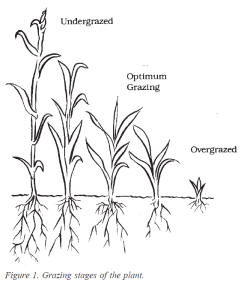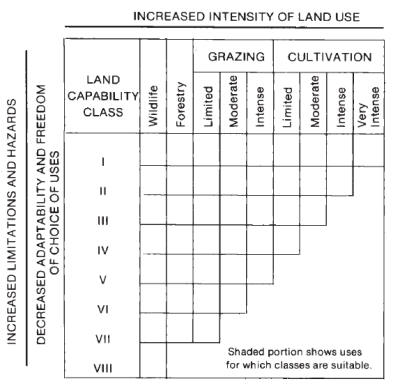



Fencing Systems For Intensive Grazing Management
Making the most of your forage with rotational grazing, will allow stocking rates to be increased resulting in increased beef production per acre, write extension officers, L.W. Turner, C.W. Absher and J.K. Evans, from the University of Kentucky.For intensive grazing to be managed effectively, controlled grazing needs to be in place, through subdividing the pasture through the use of fencing. Rotating animals among these paddocks will optimise forage and beef production.
When developing the layout for a fencing system, consider the following points:
- Fixed resources on the farm, such as acreage, soil type, slop and rockiness;
- Semi-fixed resources, such as water supply, existing fences, existing grass base;
- Changeable resources, including forage type, temporary fences, cattle numbers;
- Other factors, including seasonal usage patters, economics and land use for other enterprises.

Evaluating Resources
Because grasses and legumes recover quickly after grazing they are good pasture plants. However, overgrazing reduces the leaves, which is the source of energy used by animals for feed. A reduction of leaves means the plant must draw on food from leaf sheathes, roots and crowns to produce new growth which contain less nutrients, once these supplies are exhausted the plant dies.
The opposite, undergrazing allows plants to mature and quality to deteriorate . Poor quality forage will reduce livestock daily gain impacting production.
By controlling grazing, pasture plants can be grazed adequately and given time to recover. Figure 1 shows optimum grazing length.
Fixed resources
Soil type and land class
Knowing soil type and land class will assist in determining the best use for each particular resource. Land classes are determined by slope, erodibilty, drainage and soft depth. All land classes are available for some form of grazing. Figure 2 shows the intensity with which each land capability can be used with safety. The higher towards Class V111 the land is, the more limited the use of the land is.

The land's slope and orientation with respect to north, greatly influence plant environment and forage growth. Early in the year a Southeast facing slope tends to warm up sooner and therefore have more growth of a particular forage, all other conditions being equal, than other slopes. Even though it is shaded late in the day, the Southeast facing slope has the advantage of continued warm temperature until evening. In summer, the sun is higher in the sky and present for a longer period. The Southwest facing slope begins to dry out because of exposure to wind and weather and may have a greater decline in production than other slopes.
Animals will alter their grazing behaviour depending upon forage production of an area and its environment. If a paddock contains areas of differing slope, soil and forage type, areas of the field may be overgrazed and other areas in the same field may be undergrazed.
Erosion
Areas of land more susceptible to erosion will not be suitable for intensive grazing. It may be worth fencing extreme areas off.
Rockiness and obstructions
Rocks may restrict machinery access on some areas of land, and so will dictate which forage type is used or how the affected area is used for pasture.
Semi-fixed resources
Water
Water supply is critical for a cattle production system, particularly through hot summer months. Beef cattle need to drink 8 to 20 gallons of water a day per 1000lb (454.5 kg) animal unit. When planning the field layout, care must be taken to ensure there is access to water in each paddock. Table 1 summarises the water requirements for various sized animals according to outdoor temperature.
* "Waterer space minimums: Tank on pasture ..............1ft2 surface/ 10 head Tank in lot ......................1ft2 surface/ 25 head Water in fountain or trough in lot ........1-18 in., space/ 40 head" |
| Table 1. Beef cattle water requirements | ||
|---|---|---|
| Daily needs, gallons/ head | 50ºF | 90ºF |
| 400lb (180kg) calves | 4.2 | 9.5 |
| 800lb (360kg) feeders | 6.7 | 5.0 |
| 1000lb (454.5kg) feeders | 7.7 | 6.5 |
| Cows and bulls | 8.0 | 20.0 |
Grass Base
The existing grass base on the farm is a semi-fixed resource. It is usually not economically possible to re-seed a farm in any one year. A long-range forage plan (5-10 years) should be developed considering the land resources on the farm and the enterprises to be supported.
Existing permanent fences
Existing permanent fences may fit well into a controlled grazing plan. However, do not let existing fences limit the thinking of a new fence plan. Take into consideration the state of repair of the current fence. Old fences can be enhanced with a single wire electric fence, or if it needs replacing, consider a new location and the different types of fencing available.
Changeable Resources
Forage type
Select forages to provide a good supply over the grazing season and what suits the soil types.
Temporary fences
These allow fields to be subdivided and grazed which might later be put together for cropping - providing greater flexibility.
Cattle numbers
For intensive systems an average stocking rate of 2-4 head per acre would be average. Some extension research has shown good results with as many as 6.1 head per acre. Stocking rates should be adjusted to pasture availability. Producers of pasture-fed cattle have traditionally bought in the spring and sold in the fall. However, the manager of an intensive grazing system must consider improving the use of forage. Altering the stocking density by mid-year or more frequent sales, expanding pastures or include high quality aftermath of hay or haylage harvest are a few suggestions.
Other Considerations
Take into consideration seasonal use patterns, cattle may graze certain forages more effectively in certain seasons. Observations of cattle grazing indicates that they may graze longer in paddocks with no shade, however other research has shown that long exposures to hot weather adversely affects cattle production.
Does intensive grazing pay off?
There will be added costs of fencing, water supply and increased overhead and management costs for higher stocking rates, however the producers can expect added returns from increased production. Extension research has shown beef production of over 800lb per acre as opposed to the traditional continuous-grazing production of 100-150lb/ acre at low stocking rates.
Controlled and intensive grazing is not without economic hazards - extreme price fluctuations could cause large negative margins, drought can force sales and under-utilisation of resources that have already been purchased such as seed planted and fertiliser spread, could occur.
Planning the fencing layout
Using a map of the farm, ensure boundaries are correct and draw up any permanent fences/ walls. Subdividing land with a mixture of permanent and temporary fencing may be beneficial, but make sure that all have access to water and can be handled easily (use fencing to create lanes that allow cattle to be moved from one place to the other). The fence line does not have to be straight, a straight fence may be shorter but following the contours of the land is more beneficial.
Gate placement is important in a controlled grazing system to allow movement and flow of cattle.
Before committing to anything, work what increase in production you are expecting and compare it to the costs of redesigning the fencing, to ensure that the benefit is greater than the costs.
The 'pie-shape' arrangement, where all fields have access to one water source has two problems. The area around the water source often becomes a mud hole due to cattle congregating in such a small area. It also increases the difficulty of creating paddocks that follow land contours.
Fence construction
Permanent high-tensile fencing and portable polyethylene and steel braided fencing are recommended for rotational grazing. The permanent electric high-tensile fence is about 1/4 to 1/3 of the cost of woven wire, has a 30-year projected life as compared to 20 years and about 1/3 to 1/2 the maintenance of woven wire. Permanent high-tensile fencing is also a good option but can be more than twice the cost of 3-wire electric fence.
The newer portable electric wire fence consists of braided polyethylene plastic interwoven with stainless-steel strands to carry up to 8000 pulsating volts. This braided wire is available in various colors and lengths, as a cord or ribbon and can be purchased on reels for ease of handling. The advantage of the reel is that it allows rapid set-up and takedown offence for strip grazing. Portable fiberglass fence posts are often used with the portable braided wire, using one strand of wire for large animals and two strands for calves. Caution: This wire is designed to be used with high voltage, pulsating energizers. Conventional weed-burning charges will melt the synthetic fibers that are woven with the steel wire.
It is important to remember that fencing systems for controlled grazing must be tailored to each individual farm. However, fields should be created from soil that is as uniform in slop/ aspect and forage characteristics as possible, following contours will allow this. This fencing system can be designed with current fencing materials to be functional and economical.


